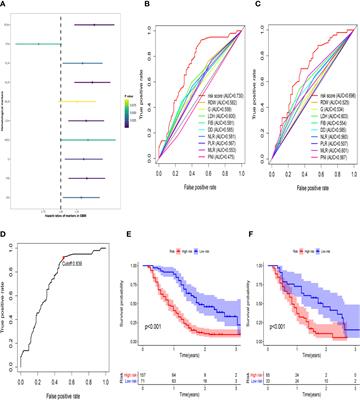Background
Glioblastoma is the most common primary malignant brain tumor. Recent studies have shown that hematological biomarkers have become a powerful tool for predicting the prognosis of patients with cancer. However, most studies have only investigated the prognostic value of unilateral hematological markers. Therefore, we aimed to establish a comprehensive prognostic scoring system containing hematological markers to improve the prognostic prediction in patients with glioblastoma.
Patients and Methods
A total of 326 patients with glioblastoma were randomly divided into a training set and external validation set to develop and validate a hematological-related prognostic scoring system (HRPSS). The least absolute shrinkage and selection operator Cox proportional hazards regression analysis was used to determine the optimal covariates that constructed the scoring system. Furthermore, a quantitative survival-predicting nomogram was constructed based on the hematological risk score (HRS) derived from the HRPSS. The results of the nomogram were validated using bootstrap resampling and the external validation set. Finally, we further explored the relationship between the HRS and clinical prognostic factors.
Results
The optimal cutoff value for the HRS was 0.839. The patients were successfully classified into different prognostic groups based on their HRSs (P < 0.001). The areas under the curve (AUCs) of the HRS were 0.67, 0.73, and 0.78 at 0.5, 1, and 2 years, respectively. A dditionally, the 0.5-, 1-y, and 2-y AUCs of the HRS were 0.51, 0.70, and 0.79, respectively, which validated the robust prognostic performance of the HRS in the external validation set. Based on both univariate and multivariate analyses, the HRS possessed a strong ability to predict overall survival in both the training set and validation set. The nomogram based on the HRS displayed good discrimination with a C-index of 0.81 and good calibration. In the validation cohort, a high C-index value of 0.82 could still be achieved. In all the data, the HRS showed specific correlations with age, first presenting symptoms, isocitrate dehydrogenase mutation status and tumor location, and successfully stratified them into different risk subgroups.
Conclusions
The HRPSS is a powerful tool for accurate prognostic prediction in patients with newly diagnosed glioblastoma.



Δεν υπάρχουν σχόλια:
Δημοσίευση σχολίου
Σημείωση: Μόνο ένα μέλος αυτού του ιστολογίου μπορεί να αναρτήσει σχόλιο.